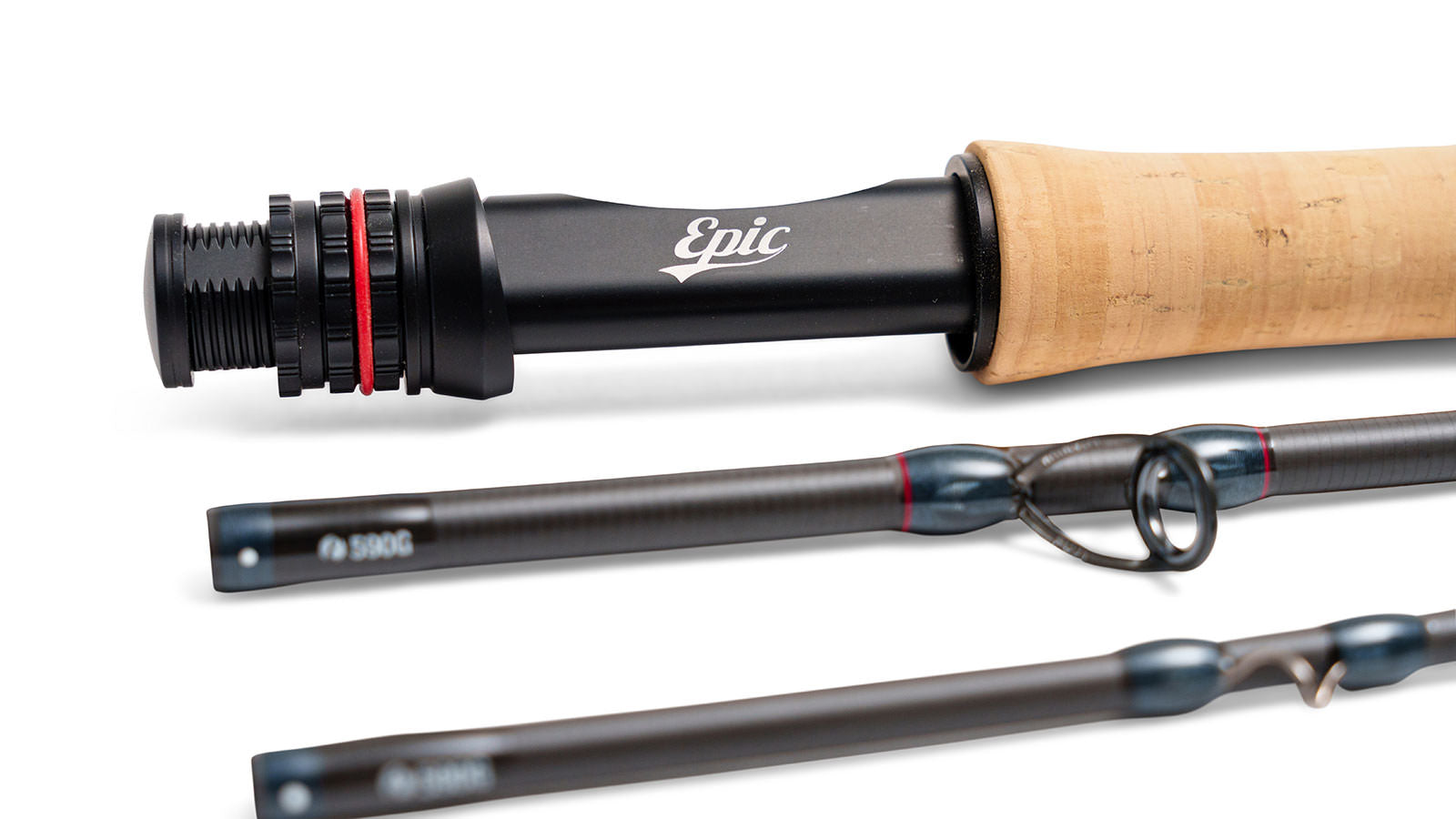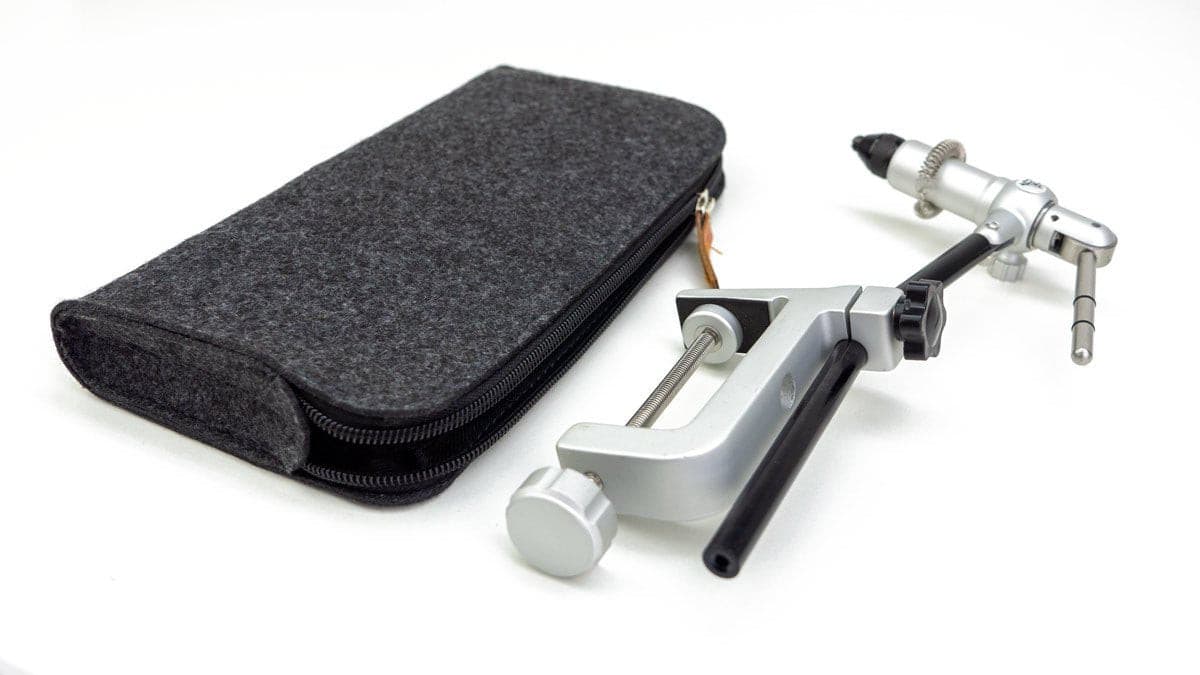Our recent collaboration introduced us to A.J. Swentosky a talented Outdoor Content Creator. Join us as we not only get to know A.J. better but also hear about his latest project 'The Dry Fly Process' and what drives him as both an Outdoor Content Creator and an ardent fly angler.
Gary Ferrari and Garret Brain were fishing the Reference 690G 6 Weight Fly Rod, the Reference 580 5 Weight Fly Rod and the Backcountry 5/6 Fly Reel.
Tell us a little about yourself. Where are you based? What do you do when you’re not fishing or making awesome films?
Sure, I just recently relocated from Jackson, WY to Bend, OR. My family and I were in Jackson for the past 10 years and loved the outdoors, local rivers, wildlife and the entire Jackson Hole community. Although a little bittersweet, we are stoked on the move to Bend for both personal and professional reasons.
I run a small creative and production company (Frogwater Productions) so I’m almost always shooting fishing and outdoor activities for businesses, brands, and editorial publications. When I’m not in the field, I’m either editing or spending some good old quality time with the family.
When, where, and how did you start fly fishing?
Similar to many others, I was a casual spin fisherman growing up. I probably only fished a few times each year on my local rivers and ponds but always enjoyed spending time outdoors and near water. As far back as I can recall I was naturally intrigued with the mystery of what size and types of fish lived beneath the water’s surface. The best way to find out what was in a body of water was to fish it!
I started dabbling in fly fishing during my undergraduate college years. By the time I completed my undergraduate degree I was 22 and truly obsessed with fly fishing. I have to admit that I have an addictive personality and while I enjoy many different projects and interests, there’s been two or three passions for which I have an insatiable appetite. Fly fishing is one of those… Storytelling via video and photo formats is another.

How did you get into filmmaking?
Photography preceded filmmaking. As part of my infatuation with fly fishing, I started to really appreciate the visual beauty of landscapes, environments, and the fish, as well as the action of hunting fish. I began taking a camera on the majority of fishing trips and found the whole photography process extremely rewarding. It provided the “gift that keeps on giving”. After returning home from a day of fishing, I now had images to both reflect on and edit. Embracing photography allowed each fishing trip to be extended for days later via editing.
This appreciation for fly fishing photography gradually progressed to filmmaking. I’ve always loved quality fly fishing films. Once the Trout Bum Diaries were released back in 2005, I would anticipate the release of any and all fly fishing videos. Thinking back to the early Fly Fishing Film Tours (F3T), IF4, Confluence Films, R.A. Beattie’s work, these films would provide so much inspiration for me to just want to get out and fish. My love for both fly fishing, fly fishing culture, and fly fishing videos provided me with the desire to create films myself. I still have so much to learn about story development, different documentary formats, and larger productions, but I enjoy the process as much as anything.
Oftentimes when I’m out filming I know that some of the anglers feel bad that I only have a camera in hand and not able to enjoy the fishing. Many of them kindly try to get me to take some time to fish. While it’s definitely nice to drop a Drake spinner or PMD Comparadun in front of a rising trout, capturing that moment on film is even more rewarding for me now.
Give us a brief summary of your latest project, ’The Dry Fly Process’ and what inspired it.
Over the past year or more I’ve really been enjoying the work of Ryan Kelly (IG handle is @greenriverflyfisher) and all of his close up shots of rising trout. This inspired me to put an initial project overview together that was going to focus on the Grey Drake hatch on a few of my local rivers. Unfortunately, due to an increase in local fishing pressure and WY stream access laws (you can’t touch the river bottom when on private land), it was going to be extremely difficult if not impossible to get a lot of the rising trout shots I wanted. I eventually pivoted off this idea and just went after the story of hunting rising trout. I have so much appreciation for the strategy and patience involved with more technical dry fly fishing.
Fortunately, two of my buddies from PA, Gary Ferrari and Garret Brain, were coming out to enjoy some local fishing. They’re both great casters and enjoy stalking rising trout more than any other form of fly fishing. It was a perfect match. I was able to play to their preferences and strengths while also getting some of those rising trout shots that I was wanting.

This film contains some incredible scenes of trout eating off the top. What are the biggest challenges facing a filmmaker trying to capture dry fly fishing?
Well, you first need to be on the water during a decent hatch and then find willing fish who have decided to key in on the adult stage of that hatch. As most trout anglers know, this is easier said than done. Assuming you have actively feeding trout, one of the biggest challenges in filming rising trout and successful dry fly fishing scenes is nailing the focus with the camera and lens. If you’re lucky enough to have a trout consistently rising in the exact same spot or feeding lane, then the rises are predictable and much easier to manually dial in your focus. More often than not, however, a trout may be rising in an area with a 5 or even 10 foot diameter. Predicting the next rise and then adjusting your camera’s focus accordingly can be quite the challenge. You’re usually using longer lenses (400mm+) to zoom in tight to the rise which narrows your total field of view. Ultimately, you need to be able to predict the exact location of the next rise or have clear enough water to see the trout in order to get perfect focus as the trout breaks the surface.
Similarly, another demanding component is nailing the focus when the angler is using super small flies (i.e., sz 18s and smaller). After the angler casts and lays the fly on the water, it can be challenging to find the fly on your monitor or viewfinder, quickly zoom in, and finally adjust the focus before the trout eats. Similar to the angler’s perspective, larger flies are much easier to film.
Generally speaking, what is your process for crafting a story like this?
I definitely spend a lot of time in pre-production, but I realize that I still need to spend a lot more. There’s usually the initial idea or story outline that may be informed by the need of a client, brand, or just my own personal project and vision. I usually watch and rewatch related films, ads, and other videos that share similarities with the initial idea and story outline. Next, I’ll create a moodboard then an integrated storyboard and shot list. At that point I’m usually ready to work through the production side of things such as confirming the locations, talent, budget, timeframe, collaborators, and anything else related to the creative process.
I think it’s imperative to have a strong story line, detailed shot list and shooting schedule planned out ahead of time, while still leaving room for flexibility and adjustments as the shooting days progress.

Is there a particular day or moment that occurred during filming that is memorable to you?
There’s almost always a day or moment that stands out when working on fly fishing projects. More often than not, it’s the unexpected fishing sessions or some unforgettable obstacle. For this film, I think it was our first day of fishing. We did most of the shooting across a 5 day stretch in Wyoming and Utah. On the first day, we arrived at the river a little late and really just wanted to feel things out. This was the first time that the anglers fished this river and so we planned on checking out the density of the hatches, identifying where fish were holding, finding ideal filming locations, assessing pressure from other anglers, etc. Instead of easing into things, we walked out to our first flat that was about 100 yards long and heads were up everywhere! Countless trout were sipping PMDs off of the surface, so it was time to get the footage. Gary and Garret had about 3 hours of dry fly fishing that was a true blast for all 3 of us.
What is the overarching goal that you hope to achieve with your films?
It definitely depends on the original purpose of the film. If I’m shooting a specific piece for a client or other partner, then their needs and interests heavily drive the creative process and goals of the film. That being said, whether I’m shooting for someone, with someone else, or completely independent, my goal is to elicit some emotion from the viewer. I strive to have the viewer feel the same experiences and emotions that the amazing characters and anglers experience when the camera isn’t rolling. Whether it’s a hype film with nonstop action, a more sentimental or reflective vibe, or a strictly informational piece, I hope to have the viewer have some emotional connection to the fishing experiences and stories that are being viewed.

What comes next for you? Have you got any new projects in the works?
I have a list of at least a dozen short films and documentaries that I’d love to shoot in the near future, so hopefully at least a couple come to fruition. My ideas are endless, but funding and time is finite! With that being said, I just finished shooting a short documentary style short film called Preserving Paradise. This film will provide a detailed overview of the declining trout populations in Southwestern Montana’s Jefferson River Basin which includes the iconic Big Hole, Beaverhead and Ruby Rivers. It’s an interesting story for so many reasons. There’s a wide range of stakeholders and invested groups including, but not limited to, outfitters, lodges and fly shops, local anglers, Montana Fish, Wildlife and Parks (MT FWP) and other state agencies, local ranchers, businesses and more. The local economies and communities depend heavily on visiting fly fishers. The exact cause of the declining trout populations is unknown, although the role of water flows and temperatures is paramount. Interestingly, despite the extremely concerning trout population data, the fishing this past year was great. Based on the stories and interviews of many of these stakeholders, I hope the short documentary will provide an accurate overview of the complexity of the situation, while also helping many of the stakeholders have their voices and perspectives heard. I’m hoping to have this finished and released by December 1st.


































